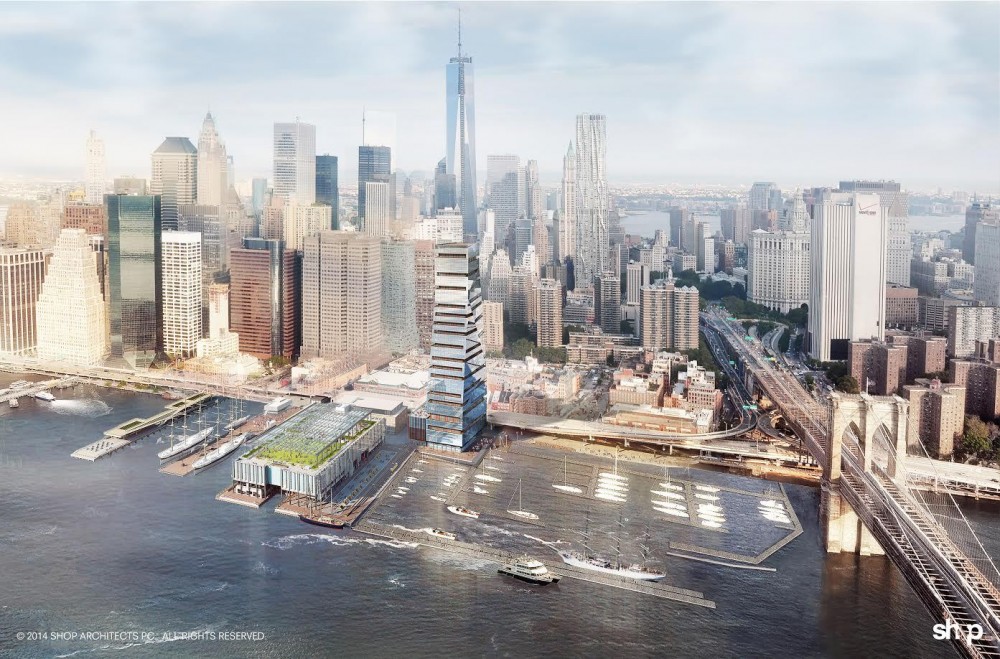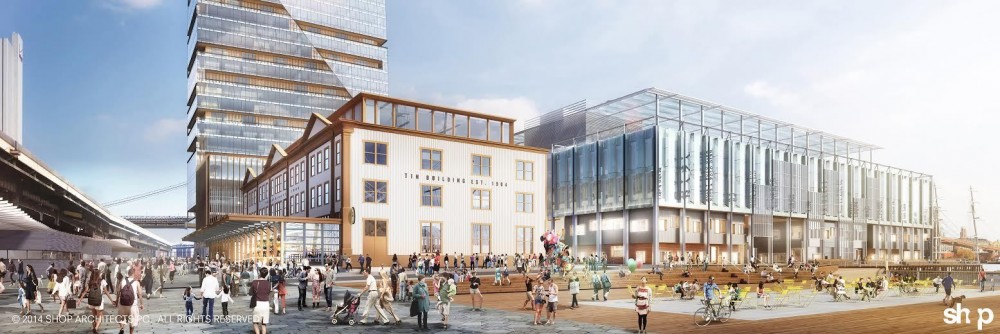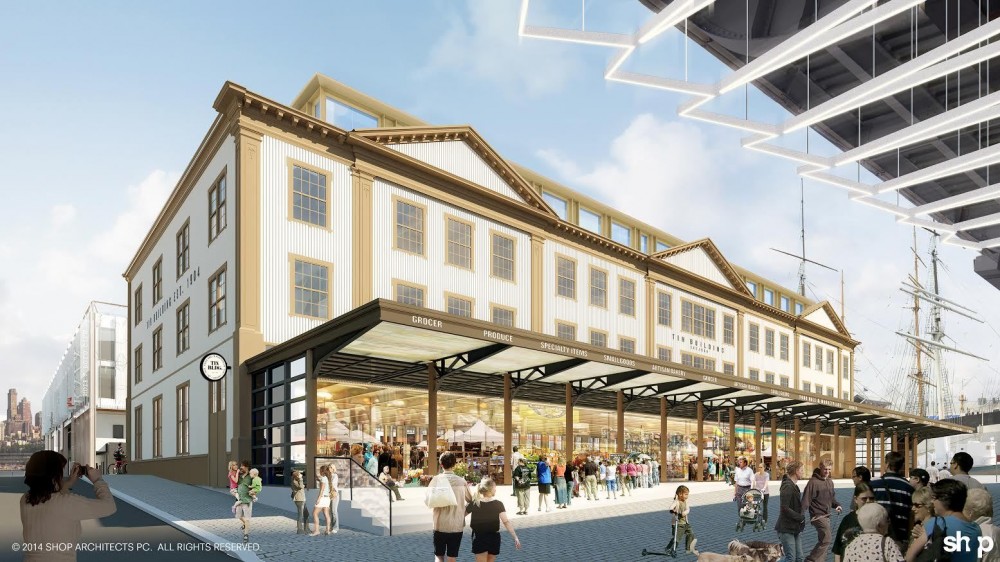Restoration plans for New York City’s historic Seaport District have surfaced, and SHoP Architects’s plan is to turn it into a mixed use, pedestrianized area, ArchDaily reports.
The scheme includes a proposed 500-foot luxury residential tower that would jut out into the harbor, extending the Manhattan grid out into the waterfront.
According to the architects, the Seaport District proposal “provides a vision of restoration and revitalization for this historic waterfront neighborhood. While South Street Seaport is currently a waterfront access hub for commuters, boaters, and tourists, it is also home to long-neglected historical elements and impediments to foot traffic.”
“The principal of this mixed-use project is to extend the Manhattan city fabric toward the water, defying the current barriers created by South Street and the FDR drive, and creating continuous pedestrian connections and increased waterfront access. The addition of retail, residential, cultural, and educational facilities will transform the waterfront area to an essential asset for the community and the city.”
“Restoration of the historic Tin Building will breathe new vitality into a long-neglected structure and provide a plaza and marketplace in a previously abandoned space. The residential building on the New Market site will complement both the history and future of the seaport in its aesthetic and materiality, and will include retail spaces as well as a school on its lower levels.”
“The Seaport project as a whole embraces the district’s nautical and commercial history at the same time as it rethinks the relationship between the city grid and the waterfront.”
Related Stories
| Aug 11, 2010
'Flexible' building designed to physically respond to the environment
The ecoFLEX project, designed by a team from Shepley Bulfinch, has won a prestigious 2009 Unbuilt Architecture Design Award from the Boston Society of Architects. EcoFLEX features heat-sensitive assemblies composed of a series of bi-material strips. The assemblies’ form modulate with the temperature to create varying levels of shading and wind shielding, flexing when heated to block sunlight and contracting when cooled to allow breezes to pass through the screen.
| Aug 11, 2010
New book provides energy efficiency guidance for hotels
Recommendations on achieving 30% energy savings over minimum code requirements are contained in the newly published Advanced Energy Design Guide for Highway Lodging. The energy savings guidance for design of new hotels provides a first step toward achieving a net-zero-energy building.
| Aug 11, 2010
Perkins+Will master plans Vedanta University teaching hospital in India
Working together with the Anil Agarwal Foundation, Perkins+Will developed the master plan for the Medical Precinct of a new teaching hospital in a remote section of Puri, Orissa, India. The hospital is part of an ambitious plan to develop this rural area into a global center of education and healthcare that would be on par with Harvard, Stanford, and Oxford.
| Aug 11, 2010
Burt Hill, HOK top BD+C's ranking of the nation's 100 largest university design firms
A ranking of the Top 100 University Design Firms based on Building Design+Construction's 2009 Giants 300 survey. For more Giants 300 rankings, visit http://www.BDCnetwork.com/Giants
| Aug 11, 2010
PBK, DLR Group among nation's largest K-12 school design firms, according to BD+C's Giants 300 report
A ranking of the Top 75 K-12 School Design Firms based on Building Design+Construction's 2009 Giants 300 survey. For more Giants 300 rankings, visit http://www.BDCnetwork.com/Giants
| Aug 11, 2010
Turner Building Cost Index dips nearly 4% in second quarter 2009
Turner Construction Company announced that the second quarter 2009 Turner Building Cost Index, which measures nonresidential building construction costs in the U.S., has decreased 3.35% from the first quarter 2009 and is 8.92% lower than its peak in the second quarter of 2008. The Turner Building Cost Index number for second quarter 2009 is 837.









